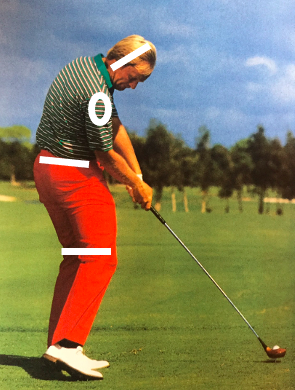Off Season Retrospection – Will 2024 be Groundhog Day for you (Again?)
As the off season commences, and you look back over your performances of 2023 in retrospect, what would you say is the thing that needs to change and improve considerably for you to have an even better 2024?
1. Mental? Physical? (IF your body’s joints are positioned for a downswing that suits their design, and then it does not work, it could be termed a mental issue. Is yours?)
2. Short game or full swing? (Do you notice how often golfers blame the short game, especially putting? Putting is merely the final opportunity on a hole to score well, not the only one. Why do so many golfers, even pros, expect to sink all lengths of putts under pressure when their record is nowhere close to 100% sinks in practice?
3. General inconsistency, a distance issue or a direction issue? (Do your tee shots or approach shots lack distance-wise or direction-wise consistency? What do your dispersion patterns look like for all shots from full-swing to short game to putting?)
How do you plan to be better next year than you were this year? By continuing to do more of the same and hope for a change of fortune?
If you wish to at least understand the swing limitations that cause your inconsistencies, I offer a very comprehensive and extremely scientific evaluation (biomechanical, anatomical and posture-gait related) that can explain to you what might be creating the inconsistencies in your performance or increase your injury risk.
I can help you not to be in the situation the GOAT of golf GOATS finds himself in currently. None other than Jack Nicklaus was recently quoted as having said, “I would like to go play again. I play so poorly anymore it’s just really not any fun,” Nicklaus said. “And I run out of golf balls.” That situation should never happen to any golfer, leave alone to someone of the amazing stature of Jack Nicklaus. And, after all, 83 is the new 50, so he is not at all old.
I use him here as a case study to describe the issues of the ‘typical’ golf swing that you too probably have.
In his heyday, Nicklaus could have made any old backswing and gotten away with it as his strong, quick young body would have grooved in – to an extent (we have no records of how consistent he was) – the required downswing torso motions.
The specific movements that are problematic for him and for all golfers is the lowering (moving closer to the ground than during the set-up) any or all of: the lead-side head, shoulder, hip and knee (see picture below).

This is the movement that leads to the most inconsistency in golfers of all ages and skill levels. It creates a confusing array of positions (see picture above) from which the brain must control the unbending and untwisting of several body parts, in time for impact (see picture below). All within the 1/3rd second or less that the downswing lasts, and in the correct ground-up sequence. It is the main cause not only of inconsistency but also of low back injury (which Nicklaus was known to have had).

When the lead side lowers during the backswing, the motor control system must decide whether to:
- Drop the lifted trail torso down and forward first (in which case a golfer will have an over-the-top swing or, with a bit more experience, it might be a drop forward a bit then early-extend) or
- Rotate the pelvis towards target first (in which case the arms might get stuck behind) or
- Straighten the bent trail elbow first (in which case the golfer might be said to be casting)
It is thus easy to see that the most common mistakes merely result from the motor control system trying to do what it is best at – performing goal-directed movements. It will always try to ‘somehow’ deliver the implement to the target – in our case deliver the club to a ball on the ground.
Unfortunately, ‘somehow’ is not good enough, as we usually need an inside, fairly shallow path for good ball contact. And while, with practice, the ‘somehow’ will become more sophisticated, under pressure, when muscles contract faster and more forcefully, all golfers revert to more rudimentary – easier for the motor control system to manage – downswing movements. Hence inconsistency. And, often, injury.
With age, when a golfer lowers the lead side, and raises the trail side during the backswing, the backswing becomes – see picture below – short, narrow and often too steep. The body is no longer able to make the fast, more agile downswing movements of some decades ago.
The motor control system can, however, facilitate rapid arm movements much better. Short, narrow and steep backswings are not an inevitable effect of aging but merely the result of the legs- torso- and head -dropping movement I have described thus far – the main cause of all problems in the golf swing!

All skill levels of golfers can improve their performance and reduce their risk for injury, if only they get rid of existing confirmation biases about there being only one way for the golf swing to be made. Especially if they can believe that it is not required, and is scientifically very difficult, for the human body to have a “shift, twist and lift” backswing!
You CAN enjoy a far more successful 2024!


